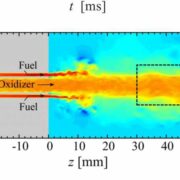What is the distinction between artificial neural network and biological brain, Artificial intelligence

What is the grasp set of rules that permits human beings to be so green at gaining knowledge of matters? That is a query that has confused synthetic intelligence scientists and researchers who, for the beyond a long time, have attempted to duplicate the questioning and trouble-fixing competencies of the human mind using Artificial intelligence and deep learning.
The dream of making questioning machines has spurred many inventions withinside the subject of AI, and has maximum currently contributed to the upward push of deep gaining knowledge of, AI algorithms that kind of mimic the gaining knowledge of features of the mind amd Artificial intelligence.
But as a few scientists argue, brute-pressure gaining knowledge of isn’t what offers human beings and animals the capacity to engage the arena quickly after birth. The secret is the shape and innate competencies of the natural mind, a controversy this is by and large disregarded in these days’s AI community, that’s ruled with the aid of using synthetic neural networks.
In a paper posted withinside the peer-reviewed magazine Nature, Anthony Zador, Professor of Neuroscience Cold Spring Harbor Laboratory, argues that it’s miles a extraordinarily established mind that permits animals to turn out to be very green learners. Titled “A critique of natural gaining knowledge of and what synthetic neural networks can examine from animal brains,” Zador’s paper explains why scaling up the present day facts processing competencies of AI algorithms will now no longer assist attain the intelligence of dogs, not to mention human beings. What we want, Zador explains, isn’t AI that learns the whole thing from scratch, however algorithms that, like natural beings, have intrinsic competencies that may be complemented with the gaining knowledge of experience.
Artificial intelligence vs natural gaining knowledge of Throughout the records of synthetic intelligence, scientists have used nature as a manual to growing technology that may take place clever conduct. Symbolic synthetic intelligence and synthetic neural networks have constituted the 2 most important processes to growing AI structures for the reason that early days of the subject’s records.
“Symbolic Artificial intelligence may be visible because the psychologist’s method—it attracts proposal from the human cognitive processing, with out trying to crack open the black box—while ANNs, which use neuron-like factors, take their proposal from neuroscience,” writes Zador.
While symbolic structures, wherein programmers explicitly outline the guidelines of the gadget, ruled withinside the first few a long time of AI records, these days neural networks are the primary spotlight of maximum trends in synthetic intelligence.
Artificial neural networks are stimulated with the aid of using their organic opposite numbers and try and emulate the gaining knowledge of conduct of natural brains. But as Zador explains, gaining knowledge of in ANNs is plenty exceptional from what’s going on withinside the mind.
“In ANNs, gaining knowledge of refers back to the procedure of extracting shape—statistical regularities—from enter facts, and encoding that shape into the parameters of the community,” he writes.
For instance, whilst you increase a convolutional neural community, you begin with a clean slate, an structure of layers upon layers of synthetic neurons linked with random weights.
As you teach the community on photographs and their related labels, it’ll progressively music its tens of thousands and thousands of parameters if you want to region every picture in its rightful bucket. And the beyond few years have proven that the overall performance of neural networks will increase with the addition of greater layers, parameters, and facts.

There are a few similarities among synthetic and organic neurons, inclusive of the manner ANNs manipulate to extract low- and high-stage functions from photographs.
Visualization of a neural community’s functions Each layer of the neural community will extract precise functions from the enter picture.
But in terms of human beings and animals, gaining knowledge of reveals a exceptional meaning. “The time period ‘gaining knowledge of’ in neuroscience (and in psychology) refers to a long lasting alternate in conduct this is the end result of experience,” Zador writes.
The variations among synthetic and herbal gaining knowledge of aren’t restrained to definition. In supervised gaining knowledge of, wherein neural nets are educated on hand- categorised facts (inclusive of the instance cited above), those variations turn out to be greater acute.
“Although the very last end result of this schooling is an ANN with a functionality that, superficially at least, mimics the human capacity to categorize photographs, the procedure
with the aid of using which the synthetic gadget learns bears little resemblance to that with the aid of using which a new child learns,” Zador observes.
Children by and large learn how to discover their global on their personal, with out the want for plenty instruction, whilst supervised algorithms, which stay the dominant shape of deep gaining knowledge of, calls for tens of thousands and thousands of categorised photographs. “Clearly, kids do now no longer depend specifically on supervised algorithms to learn how to categorize objects,” Zador writes.
There’s ongoing studies on unsupervised or self-supervised Artificial intelligence algorithms that may examine representations with very little steering from human beings. But the outcomes are very rudimentary and under what supervised gaining knowledge of has achieved.
Why unsupervised gaining knowledge of isn’t enough
virtual stressed out human mind “It is workable that unsupervised gaining knowledge of, exploiting algorithms greater effective than any but discovered, can also additionally play a function organising sensory representations and using conduct. But even any such hypothetical unsupervised gaining knowledge of set of rules is not likely to be the complete story,” Zador writes.
For instance, maximum new child animals examine their key skills (walking, running, jumping) in any such brief length of time (weeks, days, hours) that could be not possible with a sheer unsupervised gaining knowledge of on a clean slate neural community. “A big aspect of an animal’s behavioral repertoire isn’t the end result of smart gaining knowledge of algorithms—supervised or unsupervised—however instead of conduct applications already gift at birth,” Zador writes.
At the identical time, innate skills do now no longer allow animals to evolve themselves to their ever-converting environments. That’s why all of them have a potential to examine and adapt to their surroundings.
And there’s a tradeoff among the 2. Too plenty innateness and too little gaining knowledge of gets you quicker to your ft and assist you move approximately appearing your evolutionary responsibilities of surviving for your surroundings and passing to your genes to the following era. But it’ll deprive you of the power of adapting your self to exceptional variables for your surroundings (weather, herbal disasters, disease, etc.) On the alternative hand, a great learner with little innate competencies will spend maximum of its childhood in a kingdom of general vulnerability, however will turn out to be being smarter and plenty greater innovative than different beings. This explains why it takes a child human round a complete 12 months earlier than taking step one whilst kittens examine to stroll a month after birth.
mind artificial intelligence
The one element that would resemble the evolutionary optimization of the genome is the discovery of various ANN architectures inclusive of convnets, recurrent neural networks, lengthy brief-time period reminiscence networks, tablet networks, Transformers, and others.

These architectures have helped create networks that correctly resolve exceptional troubles. But they’re now no longer precisely what the genome does.
“All those new architectures are impressive, however I’m now no longer positive how analogous they’re to the architectures that emerge thru evolution,” Zador informed in written comments. “The key in evolution is that architectures want to be compressed right into a genome. This ‘genomic bottleneck’ acts as a regularizer and forces the gadget to seize the crucial factors of any structure.”
Other scientists have cautioned combining neural networks with different AI strategies, inclusive of symbolic reasoning structures. The hybrid AI method has verified to be plenty
greater facts-green that natural neural networks and is presently the focal point of various studies organizations inclusive of the MIT-IBM Watson AI Lab. Zador, but, is skeptical approximately this method, and believes that synthetic neural
networks stand a higher threat of growing synthetic intelligence. “Although the processing factors of ANNs are less difficult than actual neurons—e.G., they lack dendrites—I assume
they’re in all likelihood near enough. The truth that ANNs are time-honored approximators is suggestive,” he stated in his comments.
He does but end his paper with the aid of using reminding us that, on the give up of the day, the observe of animal brains may not be the complete solution to the AI query.
“What is once in a while misleadingly called “synthetic fashionable intelligence”—isn’t fashionable at all; it’s miles extraordinarily confined to suit human capacities so tightly that handiest a gadget established in addition to a mind can attain it,” he writes.

























